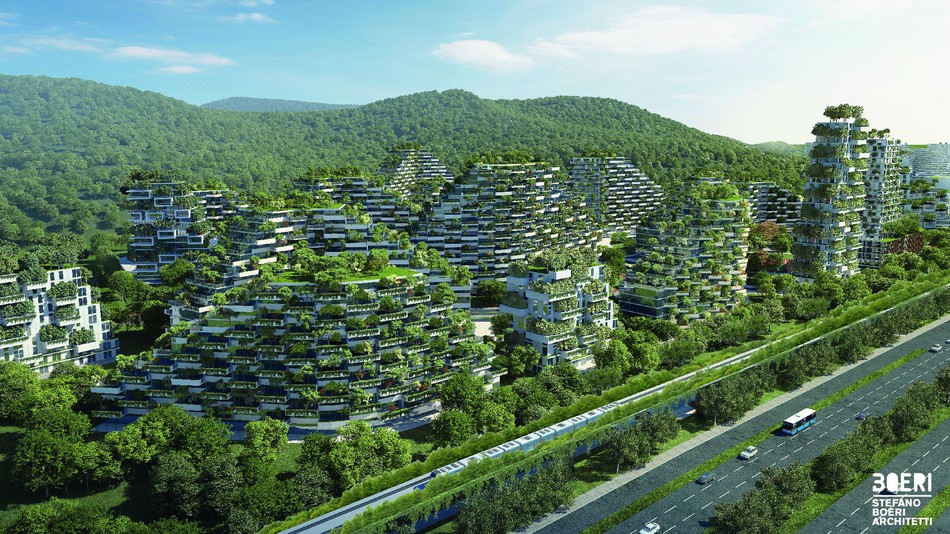The Innovative Home: Sustainable, Smart, Mainstream

Between now and 2030, the greatest need for innovation is going to be in new residential and commercial construction. Buildings are a major source of global demand for energy and materials that produce greenhouse gases, and to address this reality, more architects and builders are incorporating sustainable and smart home innovations into new projects. At the same time, entrepreneurs in the home building supply and design sectors will continue to see green and smart technologies as the next wave of opportunity.
Sustainable design may conjure images of primitive homes built with discarded tires, hemp and hay bales as construction material, or homes that look like they may have been built for hobbits, but in fact sustainability has entered the mainstream with some of the country’s leading architects embracing green and smart home innovations and incorporating it into attractive and stylish designs for modern lifestyles.
A common misconception is that sustainable homes are by necessity smaller. And while the “tiny home movement†does offer many inherent sustainable advantages, the diminutive houses can conflict with local zoning regulations and are impractical for families. Larger family homes, renovated historic homes and large Victorians, and even newer spacious luxury homes are all candidates for sustainable, green and smart design. A combination of sustainability and smart home technology has proven to be especially powerful, bringing a new era of energy-efficiency that now seen in some of the largest or spectacular designer homes in the country.
Technology is at the forefront of green and sustainable homes, and a smart home with centralized controls – innovations like NEST thermostats and utilities and appliances that can be controlled remotely with a smartphone – will ultimately save on energy costs while still allowing homeowners the luxury and style they want in a home.
Radical innovation in architecture
Ideas that may have seemed radical twenty years ago are mainstream today. LED lighting, spray foams to improve a home’s thermal properties, and energy recovery ventilators (ERVs) which exchange interior heat with exterior air are just a few examples.
Similarly, use of reclaimed materials would have never been considered by mainstream architects, yet today it represents a green approach that also enhances design. The use of architectural artifacts like old mantelpieces and reclaimed barn and timber can be strikingly beautiful in addition to saving costs.
Firms are starting to appear which professionally dismantle homes for the reclaimed lumber and materials. Instead of the materials going into the landfill, often the older homes being dismantled can be treasure troves of architectural wonders that add a traditional, hand-crafted character to new construction.
Today we are seeing cutting-edge, radical innovations that will be tomorrow’s mainstream.
Advocates of radical innovation in sustainability are taking a seat at the table. This radical innovation is already evident and even becoming mainstream in modern architectural design and energy-efficient house plans. These radical innovations may include goals such as achieving net-zero energy either through energy harvesting or innovations such as co-generation systems – small electrical plants that exist inside the home. The plant may, for example, burn inexpensive natural gas and generate electricity around the clock. The plant may also be surrounded by water coils, which capture heat from the process and transfer it to hot water, or even luxuries like heated swimming pools.
Other radical ideas already underway include “vertical forest†cities in eastern China. The Liuzhou Forest City is predicted to absorb 10,000 tons of carbon dioxide and 57 tons of fine dust pollutants per year, and will include residential, commercial, and recreational spaces. While radical, the vertical forest concept is simple in design, incorporating tree-covered skyscrapers that not only soak up pollutants but also promote biodiversity and provide a natural layer of insulation to reduce the need for heating and electricity. Smaller-scale projects may use the same concept simply by incorporating appropriate landscaping into the home design.
Current and future architectural innovations will not only substantially contribute to a cleaner environment but also form the foundation of more comfortable and economical home designs for future generations.
Wait! Before you go.
Choose how you want the latest innovation content delivered to you:
- Daily — RSS Feed — Email — Twitter — Facebook — Linkedin Today
- Weekly — Email Newsletter — Free Magazine — Linkedin Group
Timothy Bakke, Sr. is Director of Publishing for ThePlanCollection.com. With more than 30 years of publishing experience in magazines, books, and Web. Timothy regularly writes on house plans, home design, new home construction, home remodeling, and achieving a dream home.
is Director of Publishing for ThePlanCollection.com. With more than 30 years of publishing experience in magazines, books, and Web. Timothy regularly writes on house plans, home design, new home construction, home remodeling, and achieving a dream home.
NEVER MISS ANOTHER NEWSLETTER!
LATEST BLOGS
Three things you didn’t know about credit cards
Photo by Ales Nesetril on Unsplash Many of us use credit cards regularly. From using them for everyday purchases to…
Read MoreFive CV skills of a business-minded individual
Photo by Scott Graham on Unsplash The skills listed on a CV help employers quickly understand your suitability for a…
Read More



Sustainable homes should be the new trend. In this times where demand for energy is high, we should build homes that does not demand a lot of energy and also help the environment.